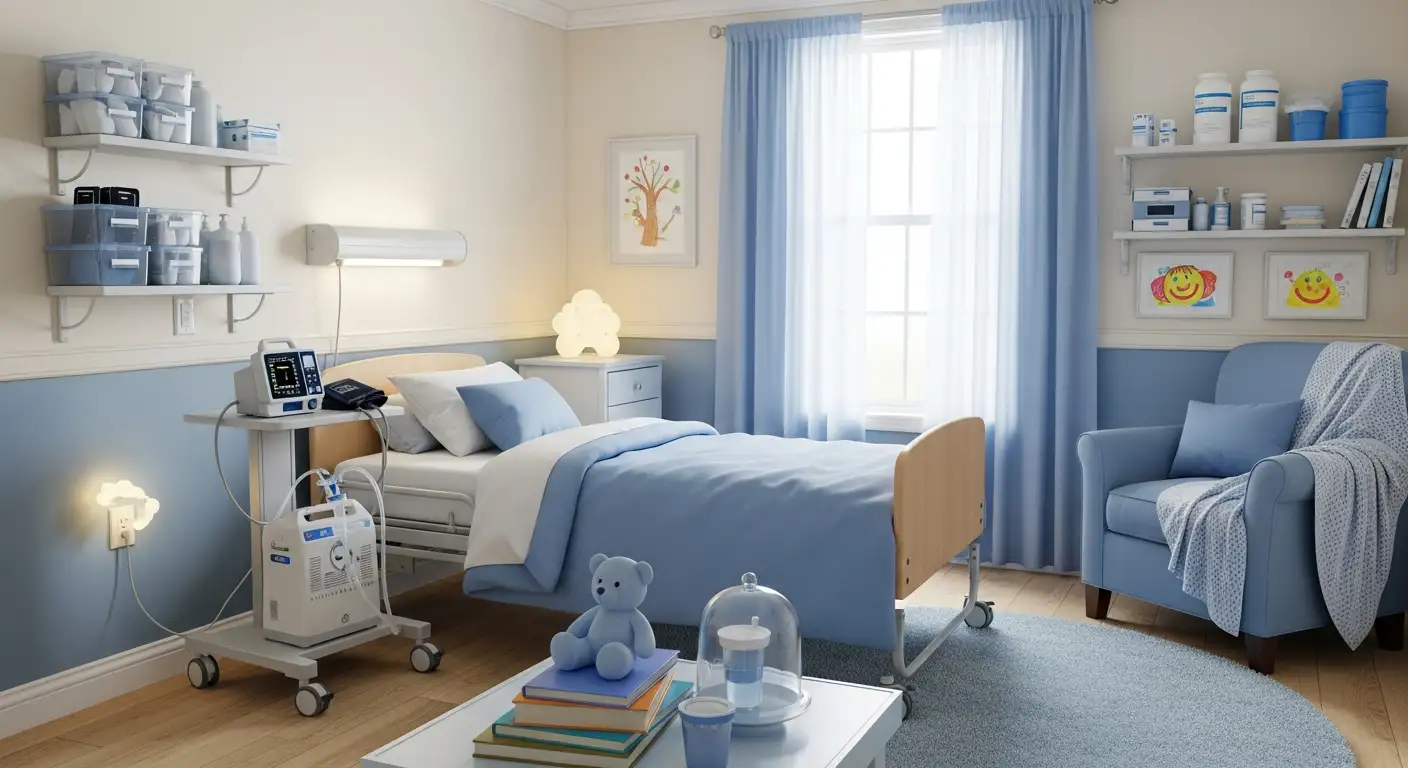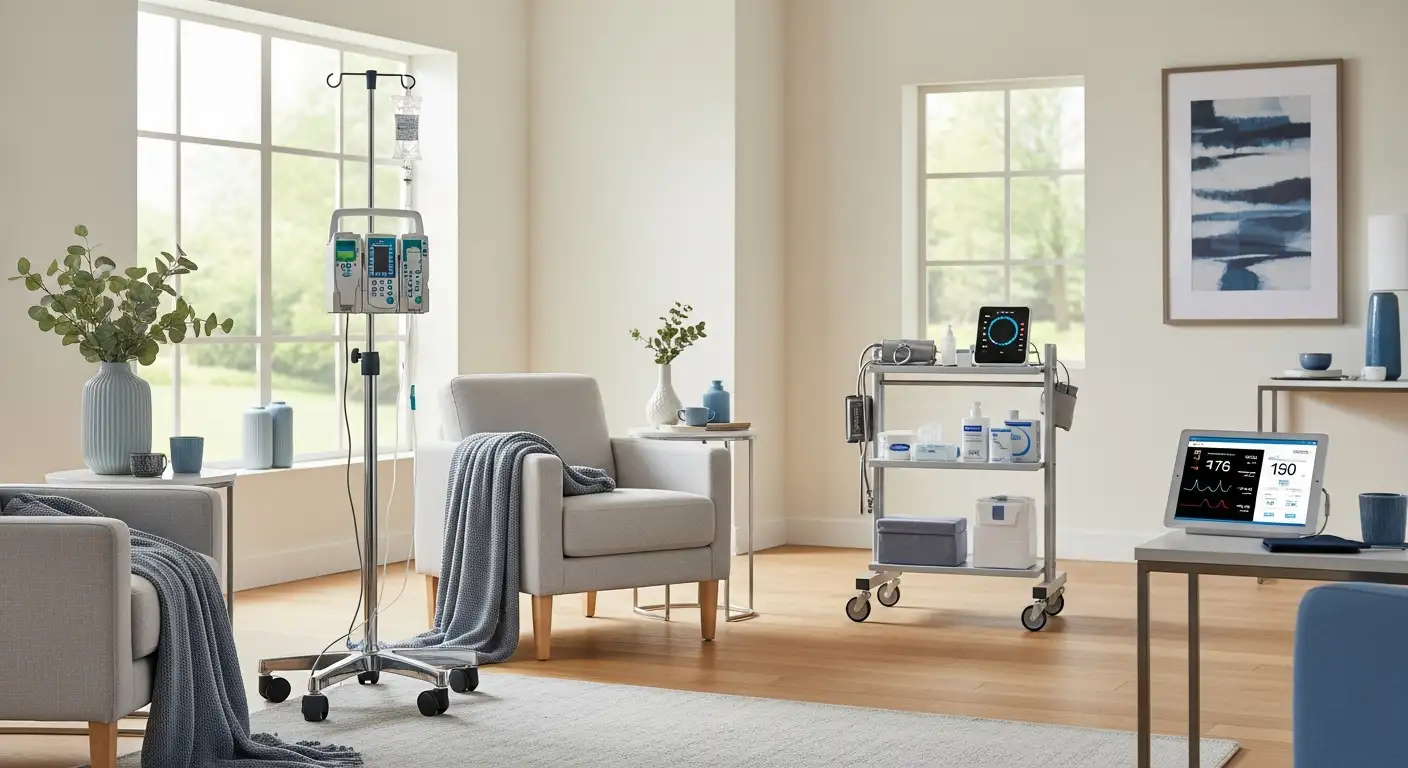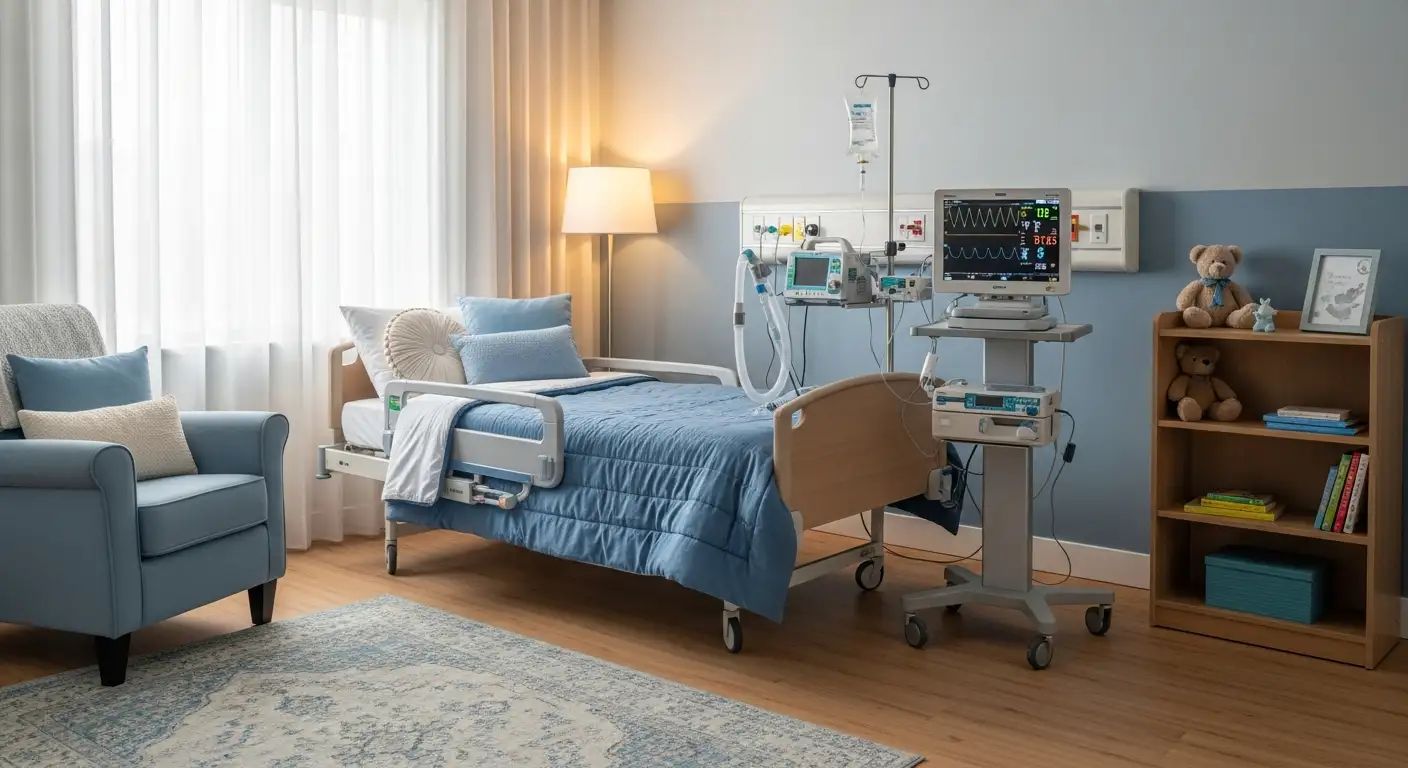Why Caregiver Training Is Essential in Pediatric Home Healthcare
In pediatric home care, the role of well-trained caregivers is paramount in ensuring the safety, health, and emotional well-being of children with complex medical conditions. Focused training programs empower families and professional caregivers to manage daily medical needs confidently while fostering positive developmental and emotional outcomes. This article explores the critical importance of caregiver education, the current challenges faced, and strategies for advancing effective, family-centered pediatric home care.
The Critical Role of Caregivers in Child Development and Healthcare
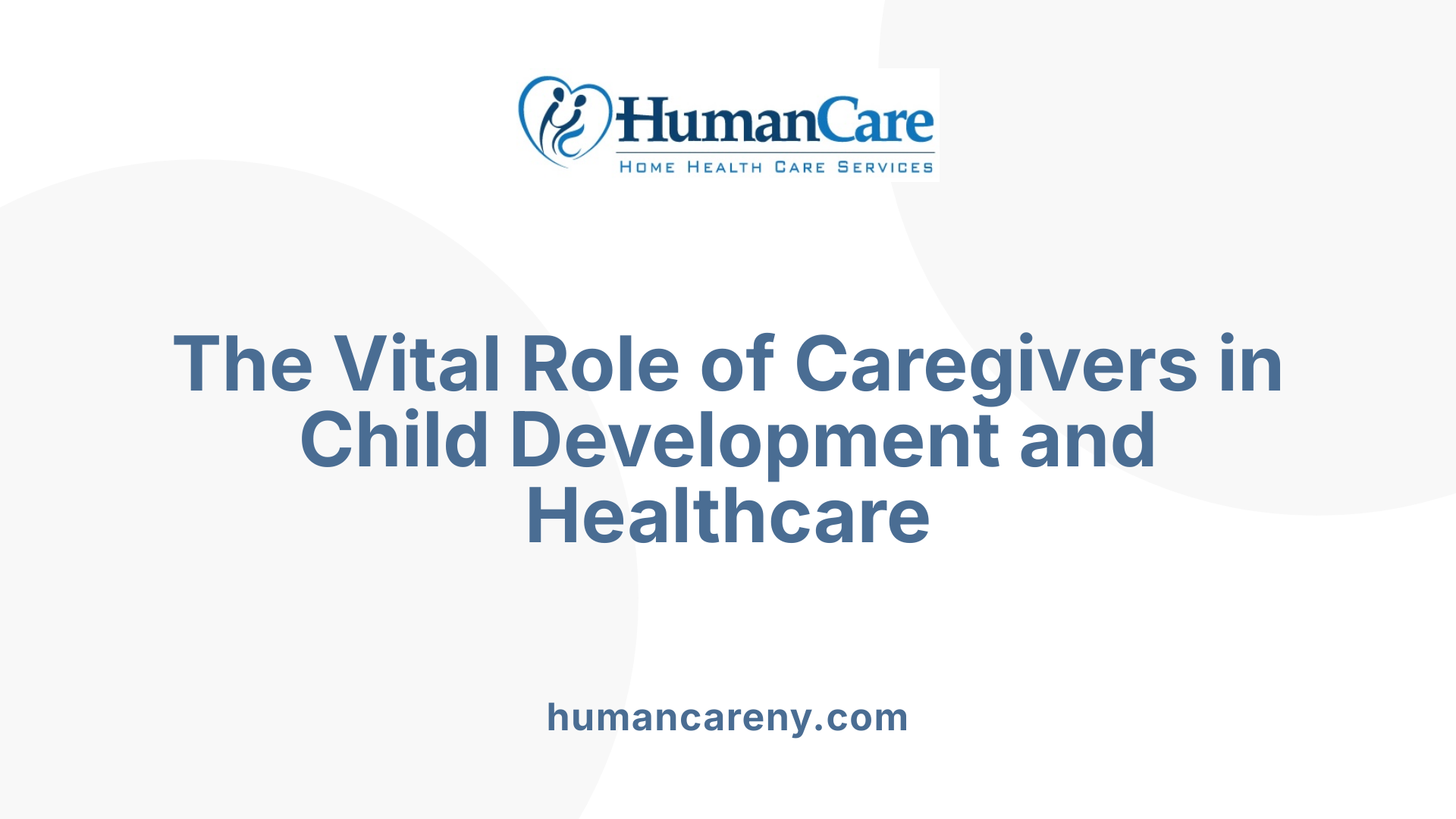
How important is a caregiver for a child?
Caregivers are fundamental to a child's overall development and health. They offer essential support across multiple areas—physical, emotional, cognitive, and social. Providing safety, nourishment, and comfort, caregivers also foster secure attachments, which are vital for healthy emotional regulation and brain growth.
A nurturing caregiver responds consistently and sensitively to a child's needs, creating an environment of trust and stability. This supportive relationship helps children develop self-esteem, social skills, and behavioral competence, shaping their ability to interact successfully with others.
Research strongly supports the positive impact of caregiver engagement. Programs that include caregiver education and active participation significantly improve developmental outcomes such as language development, motor skills, and socioemotional health.
In the realm of pediatric healthcare, trained and supported caregivers are crucial. Their ability to manage daily treatments, recognize symptoms, and respond to emergencies enhances health outcomes and reduces hospital visits.
Ultimately, attentive and responsive caregivers are pivotal in guiding children toward healthy, balanced, and successful lives. Their role is not only vital for immediate well-being but also for long-term development and resilience.
Responsibilities of Caregivers in Pediatric Home Care
What roles and responsibilities do caregivers have during patient care?
Caregivers in pediatric home healthcare shoulder a wide array of duties essential for the child's well-being. Their responsibilities extend well beyond basic personal care, involving complex medical tasks and health monitoring.
One of their primary roles is administering medications accurately and managing various medical devices, such as ventilators, infusion pumps, and feeding tubes. These tasks require thorough training to ensure safety and proper device operation. Caregivers also monitor vital signs such as temperature, heart rate, respiration, and blood pressure to assess the child's health status regularly. This ongoing surveillance helps in early detection of potential issues, enabling prompt intervention.
In addition to medical responsibilities, caregivers assist with daily routines. They help with bathing, dressing, feeding, and supporting mobility to ensure the child's comfort and independence as much as possible. These tasks are often tailored to the child's developmental needs and medical condition.
Collaboration with healthcare professionals is another crucial aspect. Caregivers work closely with nurses, therapists, and physicians to implement individualized care plans. They follow specific instructions for treatment, medication schedules, and emergency procedures, ensuring continuity of care.
Supporting families through education and emotional encouragement is also part of their role. Teaching parents and caregivers how to handle medical devices, recognize symptoms of concern, and respond confidently to emergencies reduces stress and enhances overall care quality.
Overall, pediatric caregivers create a safe, effective, and nurturing environment at home. They are vital in ensuring that children with complex health needs receive consistent, high-quality care that promotes health, safety, and development.
Purpose and Impact of Caregiver Training Programs
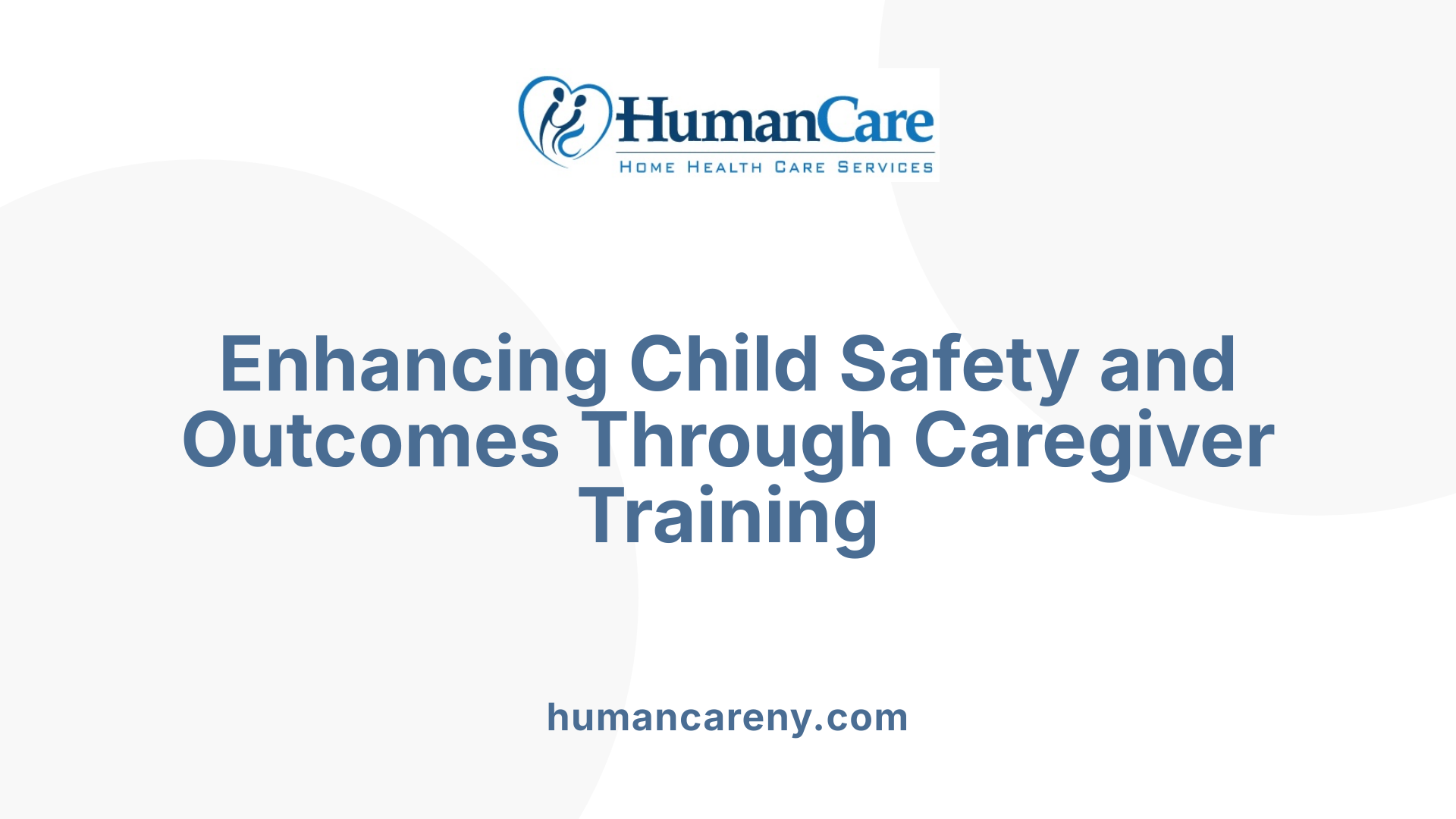
What is the purpose of caregiver training?
Caregiver training programs are designed to prepare family members and professional providers with the necessary skills to deliver safe, effective, and compassionate care at home. In pediatric settings, especially for children with complex medical needs, this training becomes crucial.
The main goal is to equip caregivers with knowledge about managing daily routines, administering medications accurately, using medical devices, and recognizing signs of health deterioration or emergencies. For instance, caregivers learn how to operate nebulizers, infusion pumps, or monitor blood glucose levels, ensuring the child's safety and well-being.
Programs often include practical components like CPR, first aid, hygiene practices, and emergency protocols. Some are structured as online courses, hands-on training, or combined approaches, sometimes supported by policies like Medicaid or healthcare organizations. This comprehensive education helps caregivers build confidence in their abilities.
How does training improve management of medical routines and emergencies?
Proper caregiver training ensures they are proficient in routine medical tasks, reducing errors and promoting consistent care. For example, family caregivers can be taught how to safely administer complex medications, change dressings, and operate breathing equipment.
In emergency situations, trained caregivers can respond swiftly and appropriately, potentially preventing complications. Recognizing early signs of respiratory distress, hypo- or hyperglycemia, or anaphylaxis allows for prompt intervention. Additionally, training empowers caregivers to communicate effectively with healthcare professionals during out-of-hours calls, which often leads to better symptom management.
What is the impact on patient safety and outcomes?
Enhanced caregiver competence directly correlates with improved patient safety and health outcomes. Children receiving trained care are less likely to experience medication errors or equipment mishaps at home. As a result, these children often have fewer hospital visits, shorter stays, and better overall health.
Training also fosters a family-centered approach, enabling children to stay in familiar environments which may contribute to faster recovery and emotional well-being. Moreover, caregivers report feeling more confident and less stressed, which positively affects the child's development and family dynamics.
How do these programs support families and respond to workforce shortages?
Caregiver training supports families by equipping them to handle complex medical needs independently, reducing reliance on overstretched healthcare systems. Families gain valuable skills, develop peer support networks, and feel more in control, which improves their quality of life.
On a broader scale, these programs help address workforce shortages by enabling qualified caregivers to manage routine medical tasks, freeing up healthcare professionals for more specialized cases. This collaborative model helps optimize resources, improve service delivery, and make high-quality pediatric home healthcare more accessible.
| Aspect | Description | Additional Notes |
|---|---|---|
| Skills Improved | Medication management, device operation, emergency response | Essential for safety and efficacy |
| Family Support | Confidence, reduced stress, peer connection | Empowers caregivers and families |
| Safety Outcomes | Fewer errors, better symptom recognition | Leads to fewer hospitalizations |
| Workforce Impact | Supports care delivery, alleviates shortages | Promotes sustainable care models |
| Future Directions | Telehealth, personalized training, policy support | Enhances training accessibility and quality |
Overall, caregiver training programs are fundamental in delivering high-quality pediatric home healthcare, improving safety, and supporting families in caring for children with complex medical needs.
Challenges and Solutions in Pediatric Home Healthcare Workforce Development
How important is a caregiver for a child?
A caregiver is fundamental for a child's healthy growth and development. They handle essential needs like safety, emotional support, and routine care while also fostering positive relationships that promote secure attachment. This nurturing environment influences a child's emotional, cognitive, and social skills, shaping their long-term well-being.
In pediatric home healthcare, caregivers are also responsible for managing complex medical tasks such as medication administration, equipment operation, and health monitoring. Their role extends to supporting developmental milestones and providing emotional comfort, which is especially crucial for children with chronic or severe conditions.
Engaged and well-trained caregivers can significantly improve health outcomes, reduce hospital visits, and enhance overall family well-being. Their presence and competence directly impact a child's recovery, comfort, and ability to thrive in a familiar environment.
What roles and responsibilities do caregivers have during patient care?
Caregivers in pediatric home healthcare undertake diverse responsibilities. They perform medical duties like administering medications, operating medical devices such as ventilators or infusion pumps, and regularly checking vital signs to detect early signs of health issues.
Beyond medical tasks, they assist with daily activities—bathing, dressing, feeding, and mobility support—ensuring the child's comfort and safety. They also coordinate with healthcare teams to implement personalized care plans, often adapting these plans as the child's needs evolve.
Supporting families by educating parents about ongoing medical management is another key role. Caregivers empower families to manage routine and emergency situations confidently, which fosters independence and reduces reliance on hospital services.
Overall, caregivers create a safe, stable, and nurturing environment. Their work promotes the child's physical health, emotional stability, and developmental progress, while also alleviating stress for family members.
Workforce shortages and training gaps
Despite the critical role of caregivers, pediatric home healthcare faces significant workforce shortages. There is a lack of adequately trained professionals and family caregivers equipped with pediatric-specific skills.
This gap limits service capacity, often leading families to manage complex care tasks without sufficient professional support. The shortage is worsened by workforce attrition owing to low wages, limited training opportunities, and job stress.
Impact of inadequate training on health and safety
Insufficient caregiver training can result in medication errors, equipment misuse, and missed signs of deterioration or emergencies. These issues pose serious health risks and can lead to avoidable hospitalization or injury.
Caregivers unprepared to recognize symptoms early or manage medical devices effectively compromise the child's safety, increasing family stress and healthcare costs.
Policy initiatives and workforce development strategies
Recent policy initiatives aim to address these challenges. Programs like the Home Health Aides For Medically Fragile Children, established under House Bill 391, provide specialized training and employment opportunities. These initiatives include online courses, in-home supervised training, and competency assessments.
Strategies focus on improving wages, expanding training programs, and creating career pathways to attract and retain skilled pediatric caregivers. Policymakers also advocate for better insurance coverage of caregiver training and services.
Role of standardized protocols and education reforms
Developing standardized training protocols helps ensure all caregivers achieve consistent competency levels, reducing safety risks. Education reforms include integrating pediatric focus into existing healthcare curricula, emphasizing emergency response, equipment management, and developmental support.
Advancing workforce education through ongoing professional development, certifications, and specialized pediatric modules sustains high-quality care. Collaborations among healthcare providers, educational institutions, and policymakers are essential to creating comprehensive, accessible training programs.
| Aspect | Current State | Recommended Improvements | Impact on Pediatric Home Healthcare |
|---|---|---|---|
| Workforce and Training | Shortages, limited pediatric-specific skills | Expand specialized training, increase wages | Better safety, fewer errors, improved child outcomes |
| Policy Support | Growing initiatives, need for reforms | Increase funding, develop career ladders | Sustain workforce, reduce turnover |
| Standardized Protocols | Limited standardization | Implement national standards, continuous education | Consistent, safe practices |
| Family and Caregiver Engagement | Varies widely | Formal training programs, community resources | Enhanced confidence, safer care |
Healthcare organizations, policymakers, and family advocates must work together to create sustainable, accessible, and high-quality pediatric home healthcare workforce solutions. Addressing training gaps and workforce shortages is vital to delivering safe, family-centered, and effective care for children with complex medical needs.
Advances in Technology and Resources Supporting Pediatric Home Care
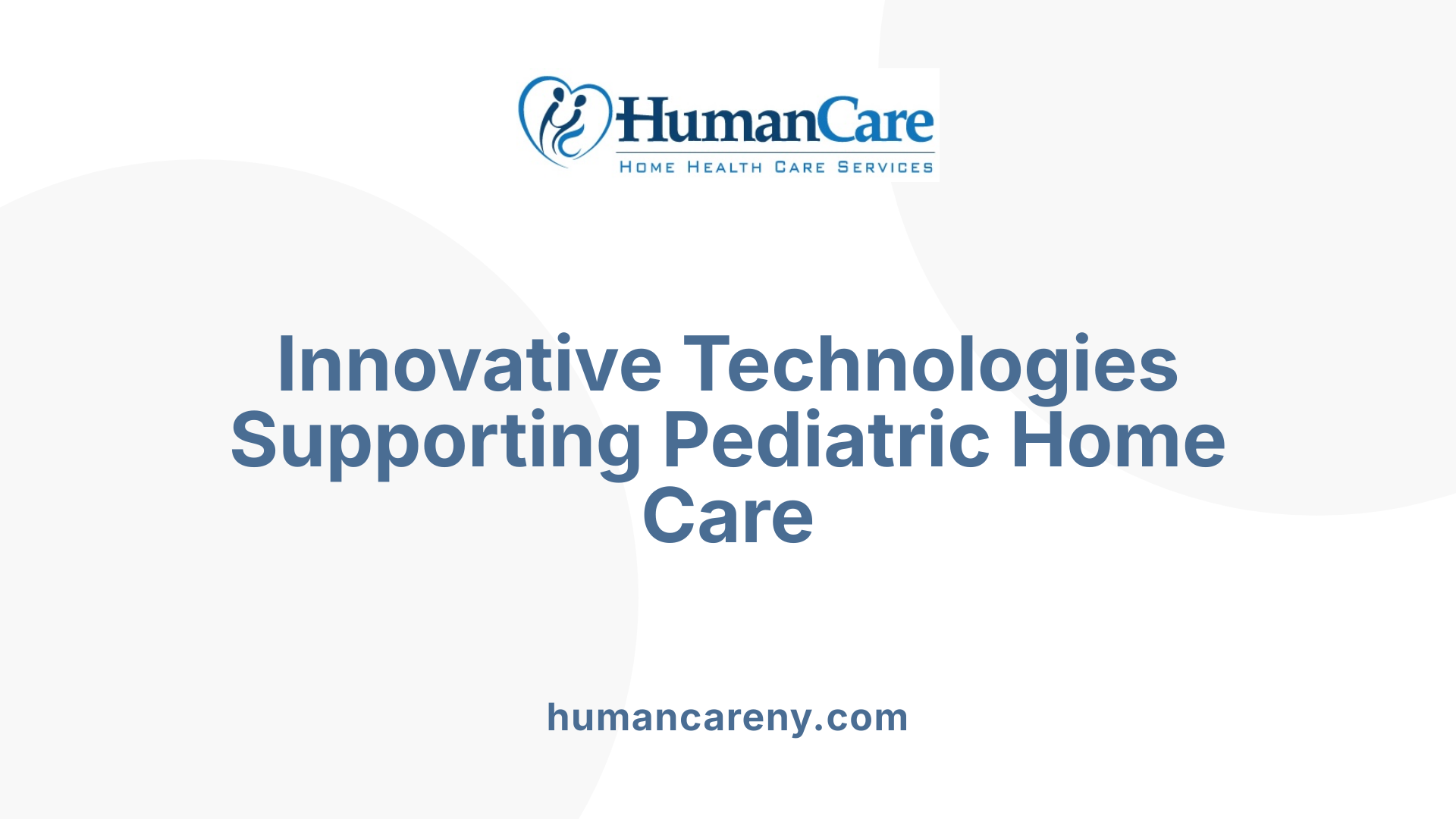
How do telehealth and remote monitoring improve pediatric home healthcare?
Telehealth has revolutionized pediatric home care by allowing healthcare providers to remotely monitor and communicate with children and their families. This technology enables real-time assessment of vital signs, symptoms, and overall health status without the need for frequent hospital visits. For families, telehealth offers convenience, continuous support, and timely intervention when symptoms arise, which improves health outcomes and reduces emergency hospitalizations.
What are the recent developments in medical devices and equipment?
Medical device technology has advanced significantly, making at-home care more effective and manageable. Portable ventilators, infusion pumps, and continuous glucose monitors now come in smaller, more user-friendly forms. These devices facilitate ongoing management of complex conditions in a home setting, reducing the need for hospital stays. Their portability and ease of use allow caregivers to maintain proper treatment routines and respond swiftly to emergencies.
How are digital tools enhancing health tracking?
Digital health tools, including mobile apps and online platforms, help caregivers track vital signs, medication schedules, and symptoms. These tools enable early detection of health changes and facilitate communication with healthcare providers. Many platforms also store health data securely, allowing for comprehensive monitoring and more personalized care plans. This integration of technology supports proactive health management and decision-making.
What educational resources and community support are available?
Caregivers can access a variety of educational resources, such as online courses, in-person training, and support groups. These resources help improve their skills in managing medical devices, administering medications, and responding to emergencies. Community support networks provide emotional assistance and shared experiences, which bolster caregiver confidence and reduce stress. Together, these resources create a strong foundation for delivering high-quality pediatric home care.
| Technology and Resources | Benefits | Examples |
|---|---|---|
| Telehealth and remote monitoring | Enhanced access, quicker response | Video consultations, remote vital sign monitoring |
| Medical devices and equipment | Improved management of complex care | Portable ventilators, infusion pumps |
| Digital health tools | Better health data tracking | Mobile apps, online patient portals |
| Educational and community support | Increased caregiver confidence | Online training, support groups |
Building Trust and Routines for Better Care Outcomes
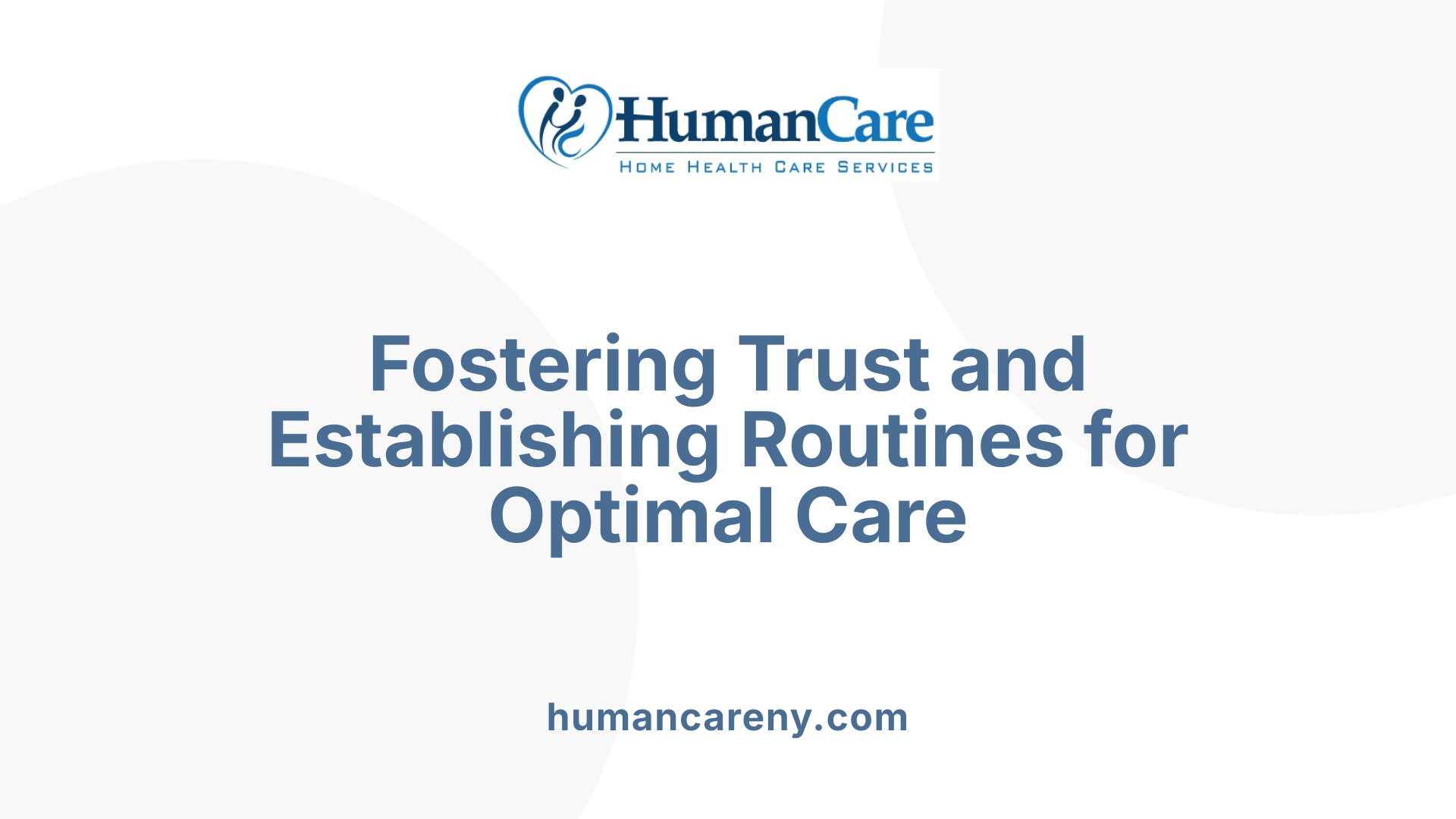
Trust-building with children and families
Establishing a trusting relationship between caregivers, children, and families is fundamental in pediatric home healthcare. Trust begins with honesty, respect, and consistent communication. Caregivers should demonstrate reliability by adhering to care plans and respecting family routines and preferences. Building a strong rapport helps children feel safe and valued, which is crucial for their emotional well-being and cooperation in care routines.
Creating effective routines
Developing personalized routines tailored to each child's needs enhances comfort and efficiency of care delivery. Routines may include daily medication schedules, hygiene practices, and therapeutic activities, all integrated into the child's natural daily rhythm. Consistent routines help children understand what to expect, reduce anxiety, and promote adaptive skills, fostering a sense of stability at home.
Communication and emotional support
Open, clear communication is vital for effective pediatric home care. It ensures families are well-informed about care procedures, emergency protocols, and health monitoring. Emotional support, including listening to concerns and providing reassurance, empowers families and alleviates stress. This approach also encourages active caregiver participation, leading to better health outcomes.
Impact on safety and health management
Building trust and establishing routines significantly improve safety and health management. Familiar routines reduce the likelihood of medication errors and equipment mishandling. Trusting relationships facilitate early recognition of health issues, enabling prompt intervention. When families feel confident and well-supported, they are more likely to adhere to care plans, ultimately enhancing the child's safety, reducing emergency visits, and promoting overall well-being.
Future Directions in Pediatric Home Health Care and Training
Innovative Care Models
The future of pediatric home health care highlights the development of innovative, family-centered models that integrate ongoing caregiver support and advanced technological tools. Programs like Imagine Pediatrics exemplify this approach, providing continuous remote assistance, telehealth consultations, and personalized care plans. These models not only enhance treatment adherence and health management but also reduce emergency visits and hospitalizations. As technology advances, portable devices like automated ventilators, infusion pumps, and continuous glucose monitors become more user-friendly, enabling children to receive complex medical care comfortably at home.
Policy Reforms and Workforce Development
Addressing workforce shortages remains crucial for high-quality pediatric home care. Future strategies include reforms in policy and funding to support specialized training and fair compensation for home health care professionals. Initiatives like the Home Health Aides for Medically Fragile Children program serve as exemplars, offering structured training and employment opportunities for family caregivers. Policy changes aimed at improving wages, providing incentives for pediatric expertise, and establishing standardized training protocols can strengthen the workforce, ensuring that children with medical complexity receive consistent, safe, and expert care.
Integration of Technology and Personalized Care
Emerging technologies play a pivotal role in tailoring pediatric home healthcare. Digital platforms, mobile health apps, and remote monitoring systems allow real-time tracking of vital signs and medication adherence, facilitating prompt intervention when needed. These tools support the development of personalized care plans, ensuring that interventions are adaptable to each child's evolving health needs. Future advancements promise even more sophisticated intelligence, supporting care coordination among healthcare teams for seamless, comprehensive management.
Enhancing Caregiver Education and Support Systems
Empowering caregivers through targeted education remains a cornerstone for improving pediatric home care. Online courses, peer support groups, and in-person training sessions enhance caregiver confidence and competence. The integration of tele-education and virtual supervision allows ongoing skill building and emotional support, particularly vital for families managing complex conditions. Strengthening these support systems ensures caregivers are well-prepared, reducing stress and medical errors, and ultimately improving health outcomes for children. Collaboration among healthcare providers, advocacy groups, and policymakers will be essential to develop sustainable, accessible caregiver training programs that meet the increasing needs of pediatric patients.
Empowering Families and Caregivers for Better Pediatric Health
Investing in comprehensive caregiver training, supportive policies, and innovative resources is essential to advancing pediatric home health care. By improving caregiver competencies and addressing workforce challenges, we can ensure that children with medical complexities receive safe, effective, and compassionate care in their familiar environment. Strengthening education systems, embracing technology, and fostering collaboration among healthcare providers, families, and policymakers will build a resilient, family-centered pediatric home care landscape. Ultimately, well-trained caregivers are fundamental to improving health outcomes, family well-being, and the quality of life for children with special needs.
References
- Effectiveness of a Family-Caregiver Training Program in Home ...
- Caregiver and Provider Experiences of Home Healthcare Quality for ...
- The Value of Engaged Caregivers in Improving Outcomes for ...
- Home Health Care Research for Children With Disability and ...
- Pediatric Home Care for Complex Medical Needs - Americare
- Understanding the Role of Pediatrics in Home Healthcare - IntegriCare
- How Pediatric Home Health Care Supports Children with Chronic ...

